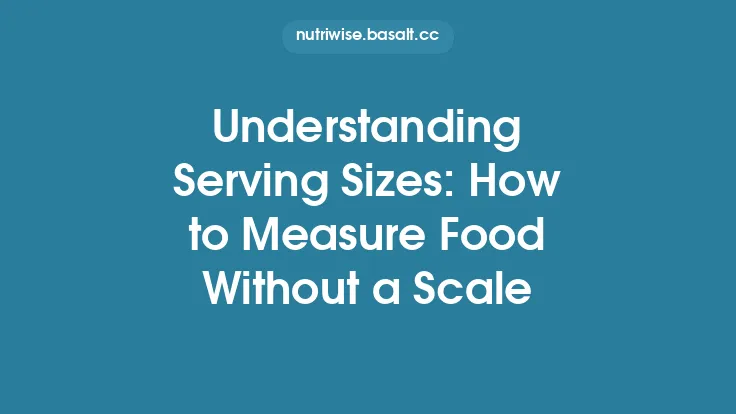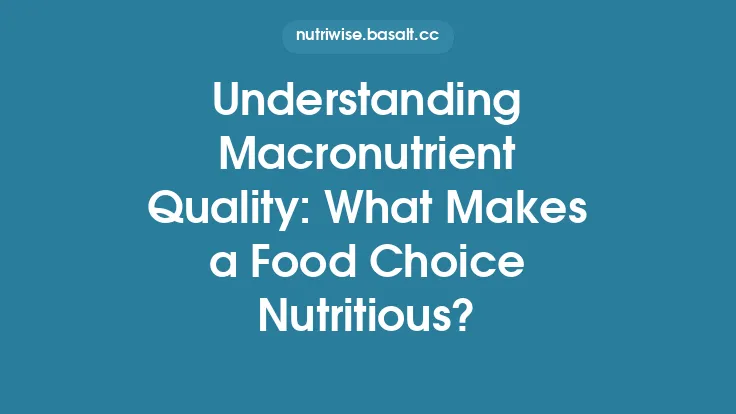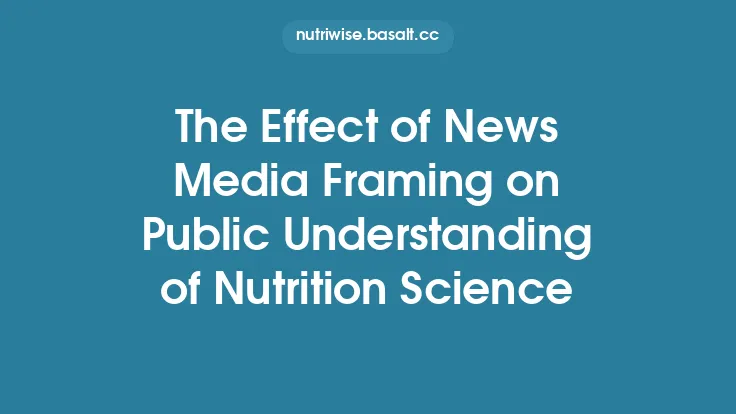The relationship between government action and what ends up on our plates is far more intricate than most people realize. From the way foods are defined and inspected, to the incentives that shape what manufacturers choose to produce, public policy weaves a silent but powerful thread through everyday nutrition. Understanding the mechanisms, actors, and evidence that drive these decisions is essential for anyone interested in the broader determinants of health, the economics of the food system, or the design of effective interventions. This article unpacks the core components of food policy, explains how various policy tools operate, and highlights the challenges and opportunities that lie ahead for creating a healthier food environment.
The Foundations of Food Policy
Food policy can be thought of as the set of rules, incentives, and institutional arrangements that govern the production, distribution, marketing, and consumption of food. It sits at the intersection of several domains:
| Domain | Typical Policy Concerns | Illustrative Examples |
|---|---|---|
| Health & Nutrition | Dietary recommendations, nutrient profiling, disease prevention | National Dietary Guidelines, nutrient‑based standards for processed foods |
| Food Safety | Contamination prevention, traceability, inspection regimes | Hazard Analysis and Critical Control Points (HACCP), recall procedures |
| Economics & Trade | Market competition, import/export tariffs, price stability | Tariff rate quotas for sugar, anti‑dumping duties on fortified foods |
| Agriculture & Production | Crop selection, livestock welfare, environmental impact | Crop insurance programs, pesticide residue limits |
| Consumer Protection | Label accuracy, advertising truthfulness, fraud prevention | Mandatory ingredient lists, prohibition of deceptive health claims |
These domains are not siloed; policies in one area often ripple into others, creating a complex policy ecosystem that requires coordinated governance.
Policy Instruments and Mechanisms
Governments employ a toolbox of instruments to influence food‑related outcomes. The choice of instrument depends on political feasibility, administrative capacity, and the specific behavior being targeted.
| Instrument | How It Works | Typical Use Cases |
|---|---|---|
| Regulation | Directly mandates or prohibits certain actions; compliance is enforced through inspection and penalties. | Setting maximum sodium levels in processed foods, banning trans‑fatty acids. |
| Fiscal Measures | Alters the price signal through taxes, subsidies, or price controls. | Imposing a tax on high‑calorie snack foods, providing subsidies for low‑fat dairy production. |
| Voluntary Agreements | Encourages industry self‑regulation, often coupled with public reporting. | Industry pledges to reduce added sugars in beverages. |
| Public Procurement | Uses government purchasing power to set standards for foods bought for schools, hospitals, or military. | Requiring whole‑grain breads in federal supply contracts. |
| Information Campaigns | Disseminates evidence‑based nutrition information to shape consumer knowledge and attitudes. | National media campaigns on the benefits of dietary fiber. |
| Research Funding & Surveillance | Supports data collection and scientific studies that inform policy design. | Funding national nutrition surveys, supporting longitudinal cohort studies. |
A well‑designed policy often blends several instruments to reinforce desired outcomes while mitigating unintended consequences.
Nutrition Standards and Dietary Guidelines
At the heart of many food policies lie nutrition standards—quantitative criteria that define what constitutes a “healthy” food product. These standards are typically derived from national dietary guidelines, which synthesize the latest scientific evidence on nutrient needs, disease risk, and population health trends.
Key Steps in Developing Nutrition Standards:
- Evidence Review – Systematic appraisal of peer‑reviewed literature, meta‑analyses, and epidemiological data.
- Stakeholder Consultation – Input from nutrition scientists, industry representatives, consumer groups, and public health agencies.
- Modeling Scenarios – Use of diet‑modeling software (e.g., Optifood, Linear Programming) to test the feasibility of meeting nutrient targets within realistic consumption patterns.
- Drafting Criteria – Specification of maximum or minimum thresholds for nutrients of concern (e.g., saturated fat ≤ 10 % of total energy, added sugars ≤ 5 % of total energy).
- Pilot Testing – Small‑scale implementation to assess compliance, market impact, and consumer acceptance.
- Final Adoption & Publication – Formal enactment through legislation, regulation, or administrative rulemaking.
Once established, these standards become reference points for a range of downstream policies, from labeling requirements to procurement specifications.
Food Marketing and Advertising Regulations
The way food is marketed can dramatically shape consumer preferences, especially among vulnerable groups such as children and low‑income adults. Governments intervene in this arena through a combination of content restrictions, placement rules, and disclosure mandates.
Common Regulatory Approaches:
- Time‑Based Restrictions – Limiting the broadcast of high‑calorie, low‑nutrient product ads during children’s programming slots.
- Spatial Limitations – Prohibiting the placement of unhealthy food advertisements near schools, hospitals, or public transport hubs.
- Content Standards – Requiring that any health claim be substantiated by a pre‑approved scientific dossier and that the claim be presented in a balanced manner.
- Disclosure Requirements – Mandating clear identification of sponsored content, product placement, or influencer marketing.
Enforcement typically involves a mix of pre‑clearance (review before publication) and post‑market monitoring, with penalties ranging from fines to revocation of broadcasting licenses.
Fiscal Policies Beyond Sugary‑Drink Taxes
While taxes on sugar‑sweetened beverages have garnered much attention, broader fiscal tools can influence the nutritional quality of the overall food supply.
- Tiered Excise Taxes – Levied based on nutrient density or energy density, encouraging manufacturers to reformulate products to lower tax brackets.
- Subsidies for Reformulation – Financial incentives for companies that replace refined grains with whole grains, or that reduce sodium content.
- Price Controls on Staple Foods – Setting maximum retail prices for essential nutrient‑dense foods (e.g., fortified cereals) to improve affordability.
- Tax Credits for Production of Nutrient‑Rich Crops – Encouraging agricultural diversification toward legumes, nuts, and seeds, which can increase the availability of protein‑rich, low‑glycemic foods.
Designing these fiscal measures requires careful modeling to avoid regressive impacts on low‑income consumers and to ensure that revenue is earmarked for complementary nutrition programs.
Food Procurement and Public Sector Purchasing
Government agencies are among the largest single purchasers of food, giving them considerable leverage to shape market offerings. Procurement policies can embed nutrition standards directly into contracts, influencing both supply chains and product development.
Strategic Elements of Nutrition‑Focused Procurement:
- Specification of Nutrient Criteria – Contracts stipulate maximum levels of sodium, added sugars, and saturated fat for all supplied items.
- Preference for Local and Sustainable Sources – Aligns nutrition goals with environmental and economic objectives, supporting regional food systems.
- Performance‑Based Incentives – Vendors receive bonuses for meeting or exceeding nutrition targets, encouraging continuous improvement.
- Transparent Bidding Processes – Publicly posted criteria and scoring systems ensure fairness and allow for external scrutiny.
When effectively implemented, procurement policies can drive large‑scale reformulation, as manufacturers adapt to meet the specifications of a major buyer.
Trade Policies and Their Nutritional Implications
International trade agreements and tariff structures shape the composition of the domestic food environment by influencing the flow of both raw ingredients and processed foods across borders.
- Tariff Rate Quotas (TRQs) – Allow limited quantities of certain foods (e.g., fortified wheat flour) to enter at reduced tariffs, supporting nutrient‑dense imports while protecting domestic producers.
- Non‑Tariff Barriers – Standards for pesticide residues, microbiological safety, and labeling can act as de‑facto nutrition policies by restricting low‑quality imports.
- Sanitary and Phytosanitary (SPS) Measures – Ensure that imported foods meet health and safety criteria, indirectly protecting consumers from contaminants that could affect nutritional status.
- Trade‑Related Intellectual Property Rights – Influence the availability of fortified food technologies and nutrition‑related patents, affecting the cost and accessibility of nutrient‑enhanced products.
Policymakers must balance the benefits of market openness with the need to safeguard public health, often requiring nuanced negotiations and evidence‑based impact assessments.
Nutrition Assistance Programs and Safety Nets
Targeted public assistance programs are a cornerstone of food policy, aiming to improve dietary quality among low‑income populations while also addressing broader socioeconomic inequities.
Core Design Features:
- Benefit Structure – Determines the monetary value, eligibility criteria, and frequency of disbursement (e.g., monthly cash benefits versus electronic benefit transfers).
- Nutrition‑Based Purchasing Requirements – Mandates that a portion of benefits be spent on foods meeting specific nutrient standards (e.g., whole grains, fruits, vegetables).
- Education and Incentive Components – Couples financial assistance with nutrition education, cooking classes, or “double‑up” incentives that match purchases of healthy foods.
- Monitoring and Evaluation – Utilizes administrative data and household surveys to assess program impact on dietary intake, health outcomes, and food security.
Robust program design can mitigate the risk of “benefit cycling” (periodic lapses in assistance) and ensure that financial support translates into meaningful improvements in diet quality.
Intergovernmental Coordination and Governance Structures
Because food systems span multiple jurisdictions—local municipalities, state/provincial governments, and national agencies—effective governance requires clear coordination mechanisms.
- Inter‑Agency Committees – Bring together health, agriculture, trade, and finance ministries to align policy objectives and resolve conflicts.
- Decentralized Implementation – Allows sub‑national entities to tailor national standards to local contexts while maintaining overall consistency.
- Public‑Private Partnerships (PPPs) – Leverage industry expertise and resources for initiatives such as fortified food distribution or supply‑chain traceability.
- Stakeholder Advisory Boards – Include civil society, academia, and consumer groups to provide ongoing feedback and enhance transparency.
A well‑structured governance framework promotes policy coherence, reduces duplication of effort, and facilitates rapid response to emerging nutrition challenges.
Evidence Generation and Policy Evaluation
The credibility and effectiveness of food policy hinge on a solid evidence base. Continuous data collection, rigorous analysis, and transparent reporting are essential for both policy formulation and post‑implementation assessment.
Key Methodological Approaches:
- Cross‑Sectional and Longitudinal Surveys – Capture dietary intake, food purchasing behavior, and health outcomes over time (e.g., national nutrition surveillance systems).
- Natural Experiments – Exploit policy roll‑outs in specific regions to assess causal impacts using difference‑in‑differences or regression discontinuity designs.
- Economic Modeling – Simulate the price elasticity of demand for various food categories to predict consumer response to fiscal measures.
- Systems Dynamics Modeling – Map feedback loops within the food system, identifying leverage points for intervention.
- Cost‑Effectiveness Analyses – Compare the health gains per dollar spent across competing policy options, informing resource allocation decisions.
Robust evaluation not only validates successful interventions but also uncovers unintended consequences, guiding iterative policy refinement.
Challenges and Future Directions
Despite the breadth of tools available, several persistent challenges complicate the translation of policy intent into nutritional reality:
- Political Economy Constraints – Lobbying by powerful food industry actors can dilute or delay regulatory action.
- Data Gaps – Limited granularity in consumption data hampers precise targeting of interventions.
- Equity Considerations – Policies must be designed to avoid disproportionate burdens on low‑income or marginalized groups.
- Rapid Market Innovation – Emerging product categories (e.g., plant‑based meat analogues, novel sweeteners) outpace existing regulatory frameworks.
- Global Supply Chain Vulnerabilities – Disruptions (e.g., pandemics, climate events) can affect nutrient availability and price stability.
Addressing these issues will require:
- Adaptive Policy Frameworks that can be updated as new evidence emerges.
- Enhanced Cross‑Sector Collaboration to align health, agricultural, and trade objectives.
- Investment in Real‑Time Monitoring (e.g., digital receipt data, mobile food diaries) to capture shifting consumption patterns.
- Participatory Policy Development that foregrounds community voices, ensuring that interventions are culturally appropriate and socially acceptable.
Concluding Thoughts
Food policy is a dynamic, multi‑layered arena where governmental decisions reverberate through every stage of the food system, ultimately shaping the nutrients that individuals consume each day. By dissecting the underlying mechanisms—regulatory standards, fiscal levers, procurement strategies, trade rules, and assistance programs—this article has highlighted how policy can be harnessed to promote healthier diets at a population level. The path forward demands rigorous evidence, transparent governance, and a steadfast commitment to equity, ensuring that the benefits of sound nutrition policy are shared by all members of society.





